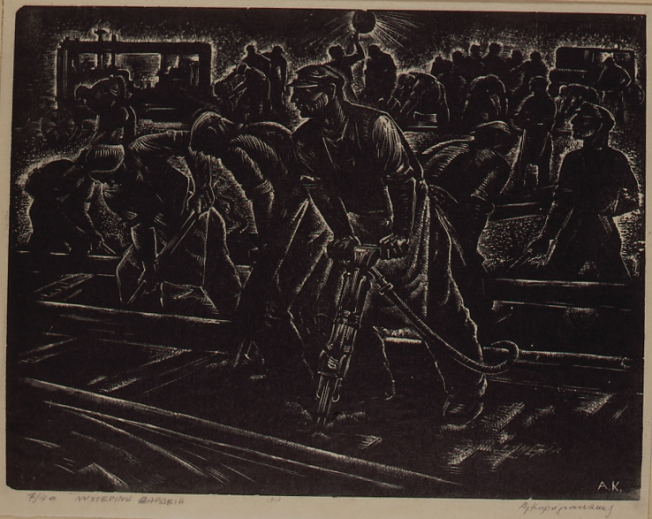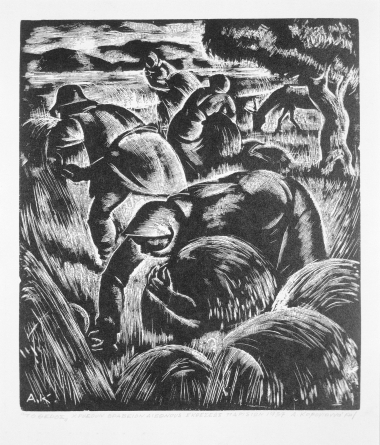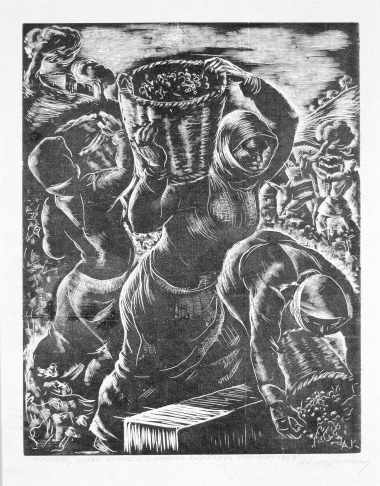Night shift, 1938

A painter and print-maker. He studied painting at the Athens School of Fine Arts under Nikolaos Lytras, D. Geraniotis, E. Thomopoulos and G. Iakovidis from 1924 to 1929.
In 1936 he began to do woodcuts on his own. As an employee of the Bank of Greece he went to Vienna for further studies, where he learnt etching techniques.
He worked at the Institute for the Printing of Paper Money and Securities of the Bank of Greece, making prints for bank notes from 1939 to 1966. He also worked for newspapers and magazines as a cartoonist and illustrated many books.
The prints of Koroyiannakis are not far removed from objective realism. The works themselves display themes taken from everyday life and mythology, and he often made reproductions of great paintings as prints.







